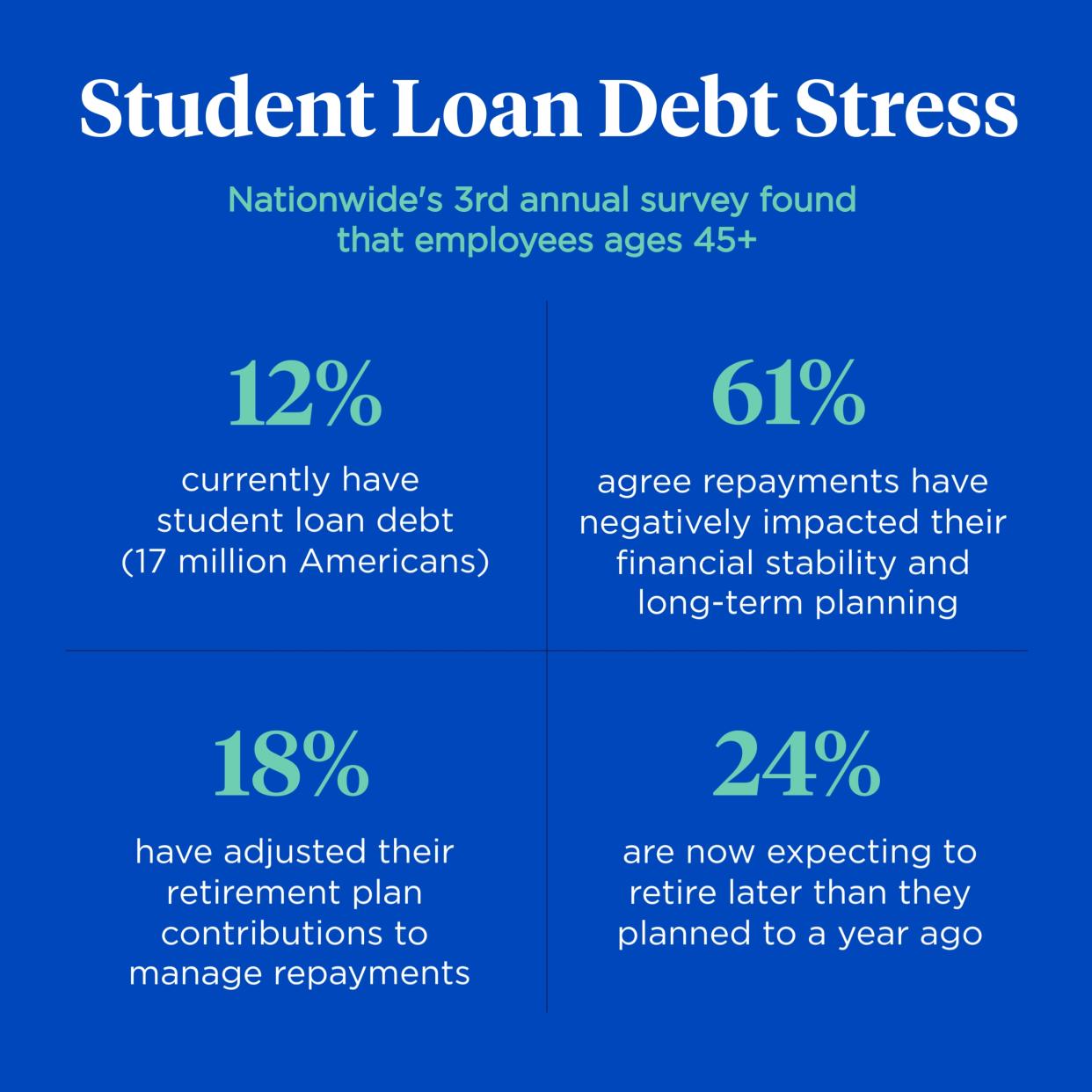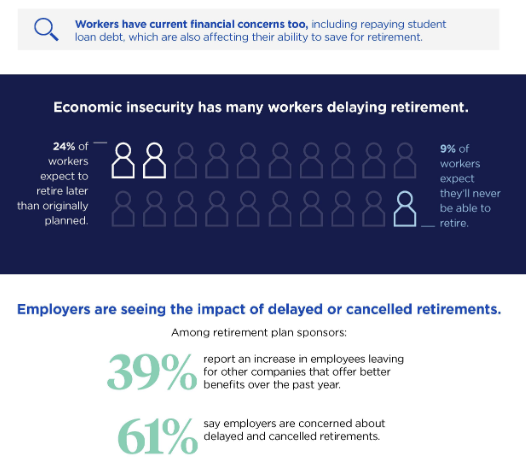Student loan borrowers will get a hand in saving for retirement next year
A new federal rule next year will make it easier for borrowers paying back their student loans to also save for their retirement.
Section 110 of the SECURE 2.0 Act, legislation signed into law last December, will allow employers to provide 401(k), 403(b), or SIMPLE IRA matching for qualified student loan payments. The provision is optional and effective January 2024.
This change helps to address a longstanding challenge for most borrowers: paying back student debt prevents them from saving for other goals, a problem that has resurfaced now that federal loan payments are no longer on pause. Additionally, this provision can benefit employers as far as retention, reducing attrition, and recruiting new talent.
"It’s impossible to ignore the long-term financial impact student loan repayments can have on employees across all generations," Eric Stevenson, president of Nationwide Retirement Solutions, said in a statement. "The good news is SECURE 2.0 Act now allows employers to provide matching retirement plan contributions based on the amount of an employee’s student debt repayments — a provision Nationwide advocated for and is excited to further innovate on."
Read more: Should you refinance your student loans?

Around 67% of graduates with student loans said the debt prevents them from contributing to things like a retirement plan, according to a 2023 Fidelity study. For borrowers earning less than $50,000, 77% said student loan payments would affect retirement savings, according to a Corebridge study.
One in 10 employees over the age of 45 have student loan debt and 61% agree repayment has negatively impacted their financial stability, according to a Nationwide survey, with 66% noting repayment will significantly affect their ability to save for retirement.
With the average borrower having a monthly payment between $200 and $500, that's real money that can help secure borrowers' futures.
Read more: Tips and tricks for quickly paying off student loans

How it works
"For example, if an employee has a $300 monthly student loan payment and can’t afford 401(k) contributions, the student loan payments are treated as 401(k) contributions," Ross Solverud, retirement plan compliance leader at Sentry Insurance, told Yahoo Finance. "As of 2024, employers have the option to 'match' student loan payments as if the loan payments were 401(k) contributions."
But it isn’t limited to employees who haven’t made contributions. If an employee isn’t maximizing their full match due to student loan payments, they will also benefit from the provision.
"If an employee has a salary of $60,000 with a 5% match on 401(k) contribution, but only contributes 3% due to $600 a month in student loan payments, they are leaving 2% or $1,200 on the table," Stevenson said. "With the SECURE 2.0 provision, they’ll be able to use their student loan payments towards the 2% to get the full 5% match."
Around 49% of employers plan to offer the matching qualified student loan payment provision, according to a survey by the Employee Research Benefits Institute (ERBI).
"Employers can adopt the benefit in a variety of ways, so long as they have a matching provision, and the student loan payments are for qualified student loans," Amanda Hahnel, vice president and head of student debt retirement at Fidelity Investments, told Yahoo Finance. "Additionally, employees need to certify the amount of payments paid."
Qualified student loans can be for private or federal loans, so long as they were incurred by the employee for qualified higher education expenses of the employee, which is typically considered the cost of attendance like tuition, room and board, books, and fees.
Read more: Are federal or private student loans better?
"Employers provide information about student loan payments, track payments, and at the end of the year the employer matches up to contribution limits," Hahnel. "Some employers may choose to allow employees to do a self-certification, which means an understanding of what's allowable, like the type of loan."
The certification process may vary from monthly, quarterly, or annually depending on the employer.
"The legislation requires at least an annual certification, but is fairly broad, giving the employer the ability to create the process and procedures around certification," Stevenson said.
Employees have until three months after the year-end to claim the benefit, if offered by their employer. Because this is a voluntary provision, with open enrollment occurring, employees should ask their human resources or benefits manager whether they plan to adopt the provision.
"We never want to leave an employer match on the table and qualified student loan payments should be no different," Jim Mahaney, a certified financial planner at Mavericus Retirement Services LLC, told Yahoo Finance. "I would counsel clients to determine in the fourth quarter if they are potentially missing out on any remaining potential 401(k) employer match and to do a one-time prepayment of principal to their student loan if they are."

Reduces attrition and serves as a employee perk
"With women retiring with 30% less than men and 54% of Black Americans not having enough savings to retire, this provision helps," Doug Ornstein, wealth manager and a certified financial adviser at TIAA, told Yahoo Finance.
More than 81% of businesses said employees have asked about more steps to prepare for retirement and 39% noticed an increase in employees leaving for jobs with better benefits over the past year, according to the Nationwide survey.
Because it is a voluntary provision, employee demand will be a big driver for employers to participate.
"Between student loans, interest rate increases and inflation, employees have a lot to navigate when planning for retirement," Stevenson said. "There is a strong business imperative for employers to help."
Ronda is a personal finance senior reporter for Yahoo Finance and attorney with experience in law, insurance, education, and government. Follow her on Twitter @writesronda.
Read the latest financial and business news from Yahoo Finance
